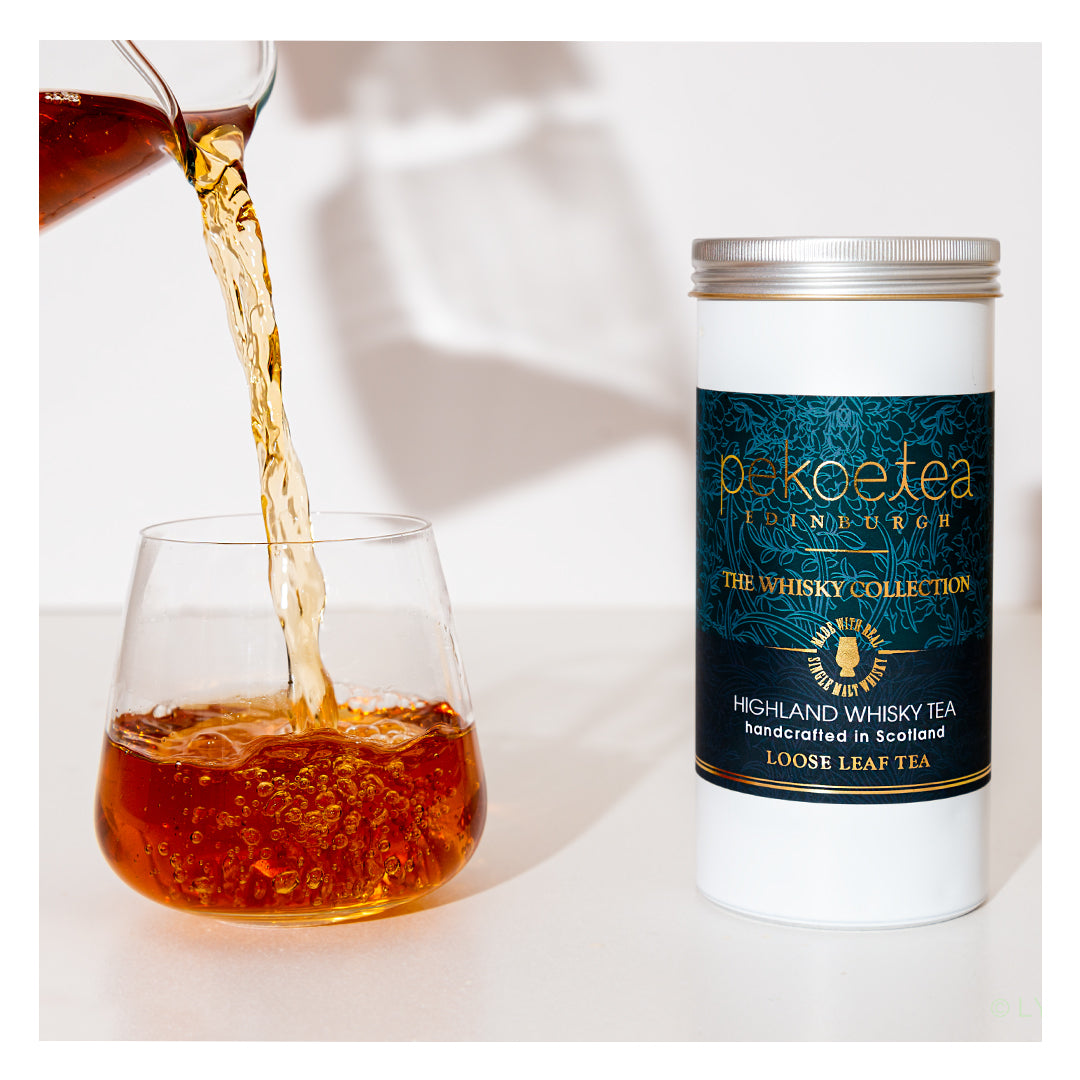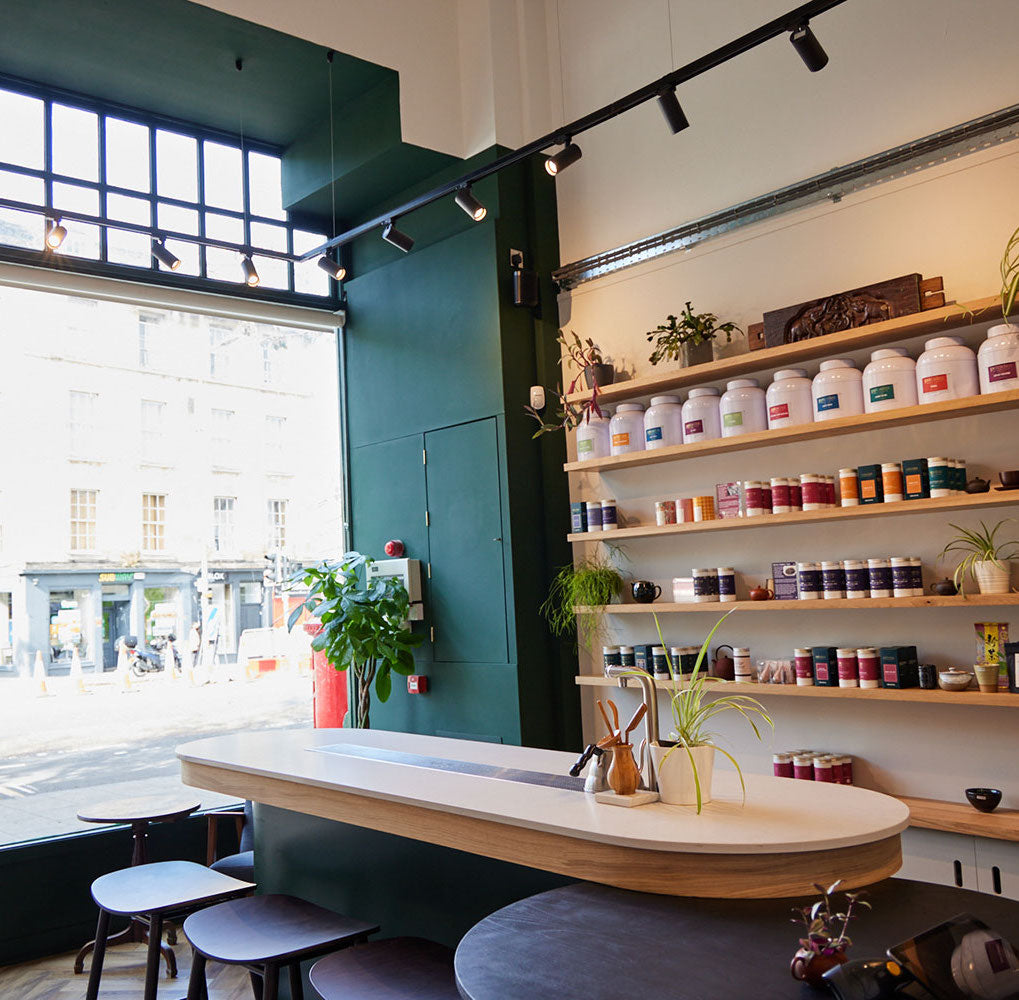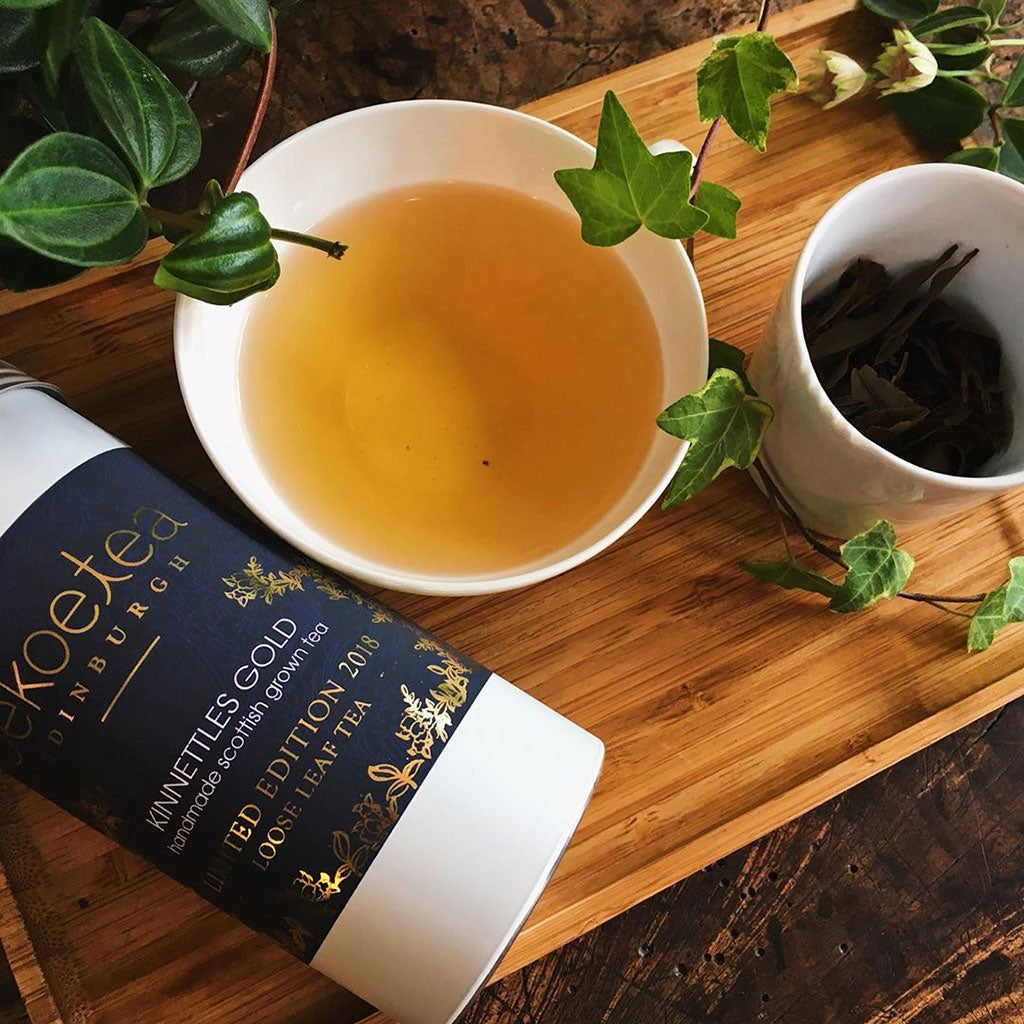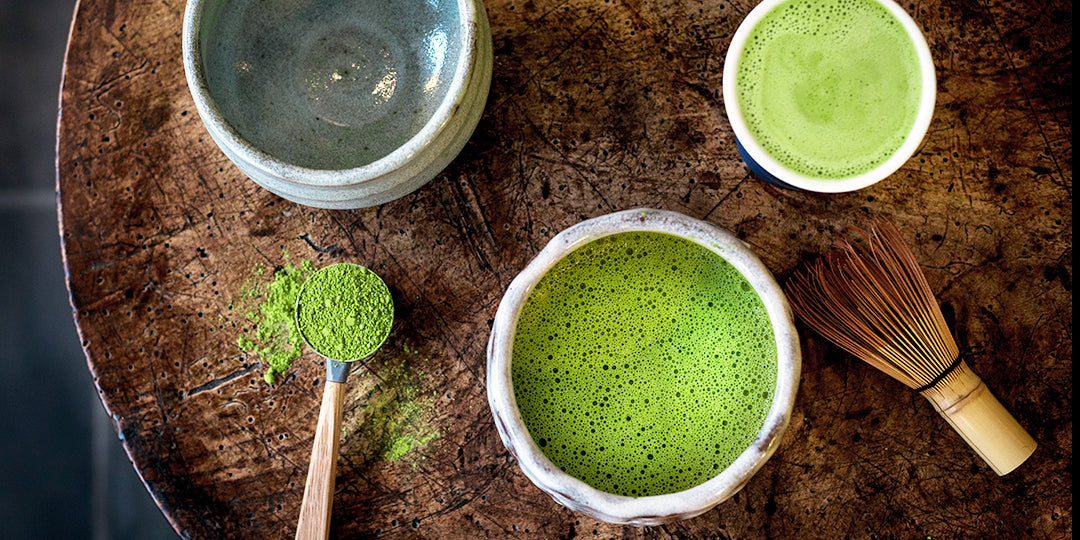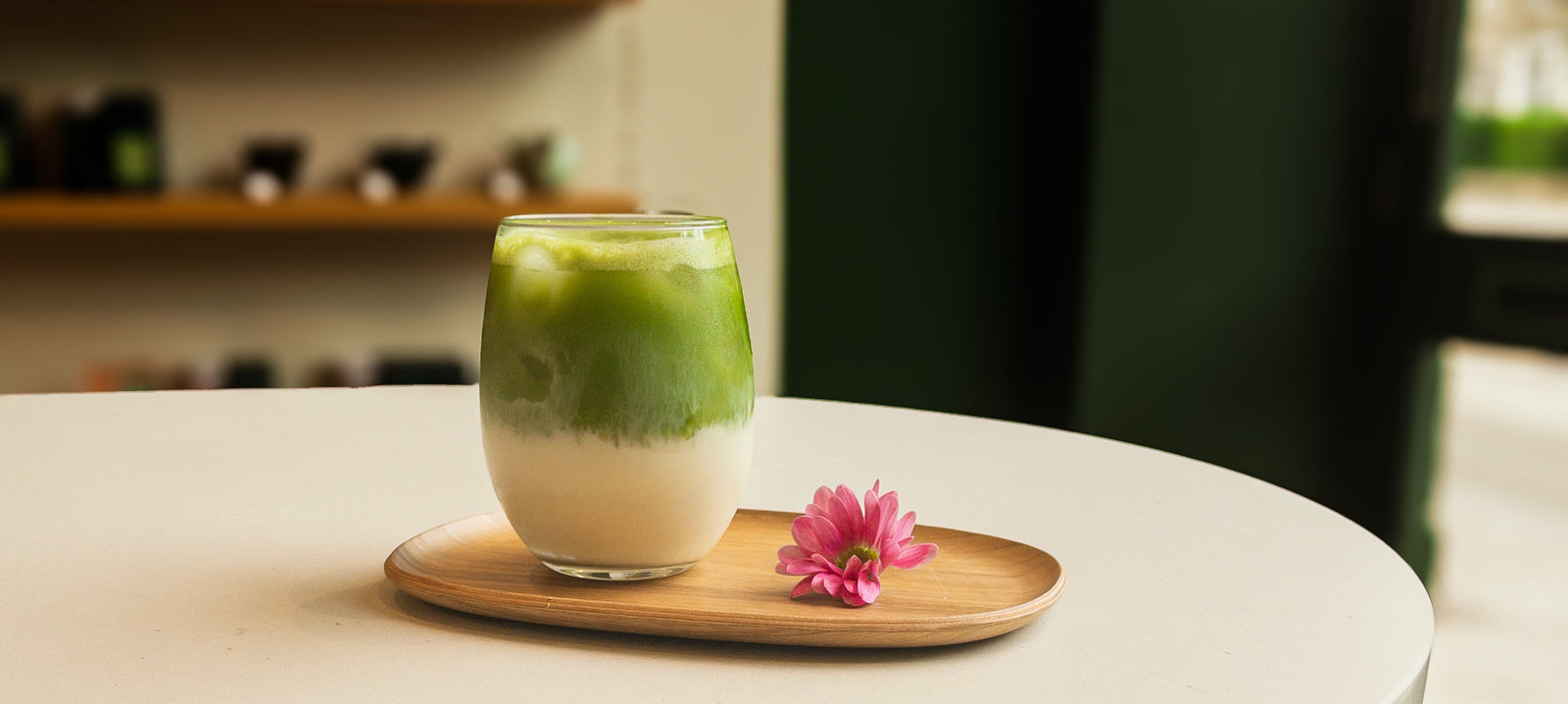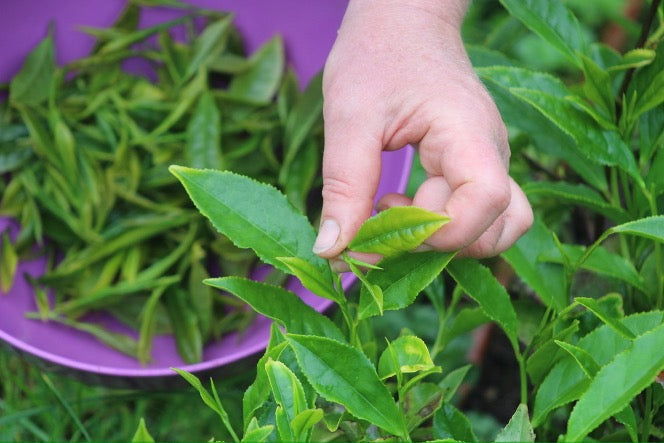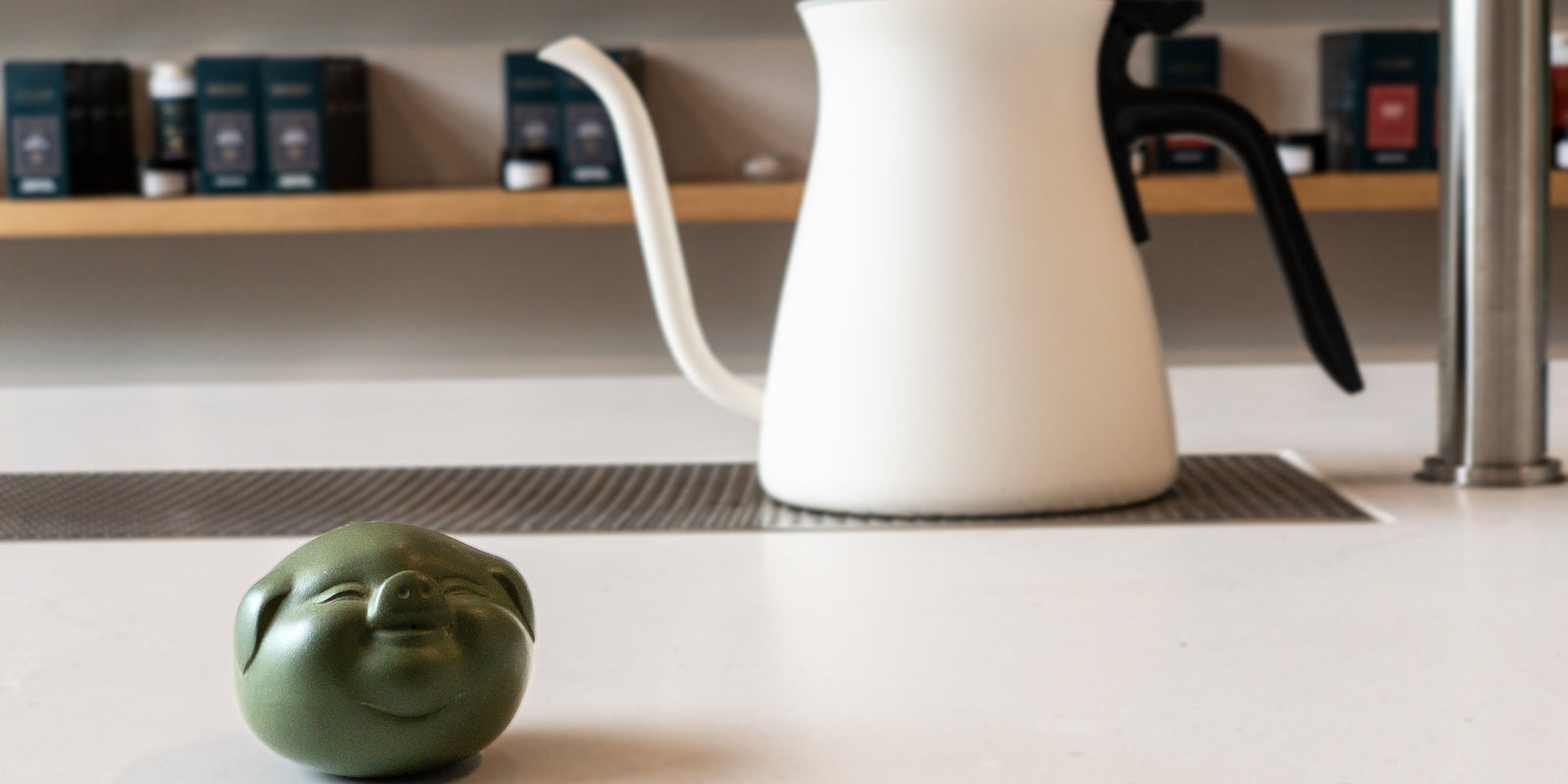All About Matcha
Matcha is green tea that is ground into a powder and traditionally added to water and whipped into a frothy drink. It originated in Song dynasty china and is also strongly associated with the tea culture of Japan. Matcha is delicious, wakes you up, and has many health benefits, so it’s no surprise that its popularity is growing. Matcha is also a delicious and versatile ingredient, adding a unique sweet flavour to cakes, pancakes, ice cream, or lattes.
Read on to learn how matcha is produced, what the different grades of matcha are, and how to make matcha.

How Matcha Is Made
For the final few weeks before harvesting the tea plants used to produce matcha are covered from the sun and grown in shade. Traditionally a trellis made from bamboo and rice straw is erected over the tea plants. Nowadays this is often achieved by putting netting over a frame. This arrangement blocks sunlight from reaching the tea plants which increases the amount of chlorophyll and L-Theanine in the tea leaves. These are the sources of the vibrant bright green colour and the sweet flavour note that matcha green tea is famous for.
After the tea leaves have been plucked they are transferred to the tea factory as quickly as possible for processing. The first stage involves steaming the tea leaves, a method used for all Japanese green teas, which softens the leaves and prevents any oxidation. After the steaming, the leaves are spread out to dry and passed through a cooling oven. The tea leaves are then put through small grinding mills which grind the leaves into a fine powder which we know as matcha. Traditionally this grinding process was done by hand, this has now been replaced by automatic grinders which are controlled by the tea master. Care has to be taken to grind the tea leaves slowly enough to keep the grinder as cool as possible to prevent it from overheating and spoiling the matcha. Even with the technology of today, the grinding process can be very slow with some tea masters only producing 15g of matcha powder per hour.
Grades of Matcha
Matcha is categorised into different grades. We stock cooking grade and ceremonial grade matcha. There are further sub-grades of quality within cooking grade matcha but for simplicity, we will talk about it as one whole grade.
Ceremonial grade matcha - as indicated by the name - is used in traditional Japanese tea ceremonies and is an extremely high quality tea. It is harvested in spring around late April. Only the buds and top young leaves are used. Ceremonial grade matcha tastes sweet, complex and fresh.
Cooking grade matcha powder is typically not as sweet and complex as ceremonial grade matcha. However it is very versatile and can be used to make matcha lattes, cheesecakes, pancakes, and ice cream. Higher quality cooking matcha is often delicious enough to drink on its own as a ceremonial style bowl of matcha but lower quality cooking grade matcha can taste muddy on its own and is best used as an ingredient in a recipe. Cooking matcha is harvested later than ceremonial grade matcha; from summer until early autumn.
The way the tea leaves are processed also determines their grade. Ceremonial matcha is still hand ground into powder using small stone mills, while cooking matcha is mechanically ground. The automation used in processing cooking grade matcha speeds up manufacturing and allows larger quantities to be processed. You will notice a significant difference in price between ceremonial and cooking grades of matcha, which reflects the difference in the challenge of growing and processing each type.

Preparation of Matcha - Ceremonial Grade
To get started you'll need your ceremonial grade matcha, a matcha bowl (chawan), scoop (chashaku), whisk (chasen), sieve and a kettle. (We recommend using tools that are made specially for matcha-making, especially the chasen, or matcha whisk, as this helps create the green foam that is so closely associated with matcha.)
Firstly, swirl hot water around your matcha bowl to warm it up. Dry your bowl completely with a clean towel. Sieve two scoops (about 1.7g) of matcha, using the scoop to gently persuade it through the holes. Next combine around 70-80 ml of hot water at ~80 degrees with the matcha powder. With your non-dominant hand, hold the bowl firmly, and with your dominant hand hold the whisk handle with your index finger, middle finger, and thumb. Start whisking slowly, and then increase speed in back-and-forth motions in a 'W' shape. When a fine foam has appeared, move the whisk in gentle looping movements to smooth out the surface of the matcha and get rid of any larger bubbles. Using less matcha will give you a thinner drink known as Usucha or using more Matcha will give you a thicker drink known as Koicha.
Preparation of Matcha - Matcha Latte
To make a matcha latte you’ll need cooking grade matcha, warm milk, a sieve, a whisk, and a method of frothing your milk.
Sieve a level teaspoon of cooking matcha into a mug. Add a small amount of water at 70 - 80 degrees and whisk together. Froth your milk and then pour on top of the matcha. I use a handheld milk brother to both whisk my matcha and froth my milk. You can also use a French press to froth your milk. Matcha begins to change taste quite quickly after opening. If you’ve got some matcha left that isn’t very fresh, try using oat milk instead of dairy milk. It’s sweeter and makes a lovely matcha latte even with slightly older matcha.
You can get your matcha supplies here.

